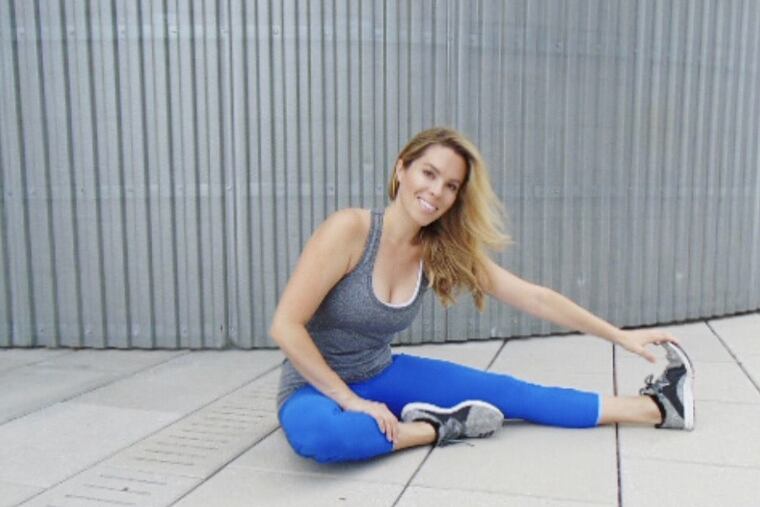The post-Broad Street Run routine you should be following
What you do in the minutes, hours, and even days following a long-distance run, will dictate how well overworked muscles and joints recuperate from pounding pavement. Soothe sore muscles with this post-race recovery plan.

Do you need to loosen up? If you competed in today’s Broad Street Run, you were probably ready to walk your weary, worn-out legs over to brunch, then crash on the couch for the rest of the day. Before you go popping the celebratory bubbly, there is still one more phase of your race routine left to complete: recovery.
For many, crossing the finish line signifies the end of all things race day-related. But what you do in the minutes, hours, and even days following a long-distance run will dictate just how well overworked muscles and joints recuperate from pounding pavement.
Soothe sore muscles with this post-race recovery plan:
Keep walking. You trained, you trotted, and now you’re tired. After clocking major mileage, you’ll likely want to kick up your fatigued feet and relax. And while rest is important, coming to a complete stop will only hinder your recovery time. Cool down by continuing to walk. This will promote nutrient-rich blood flow to thirsty muscles, as well as prevent spasms and cramps.
Stretch it out. The safest time to stretch is when muscles are warm. And since your muscles are hot, hot, hot right after a race, now is the perfect time to tend to your tight tissues. The goal is to target a runner’s top tension traps: hips, hamstrings, IT bands, and calves. Here are some simple static and dynamic stretches to alleviate muscle aches:
Hips & Glutes. Start in plank position with your shoulders stacked above your hands. Keep your spine straight as you bend your right knee and cross your right leg in front of your hips. Lower your body into this stretch and try to keep your hips centered. Hold for 20-30 seconds then switch sides.
Glutes & Groin. From a prone position, bend your knees to connect the bottoms of your feet. Slowly and carefully let your knees fall out to your sides until you feel a stretch in your groin. Hold for five seconds, bring your knees together, then repeat five times.
Hamstrings & Calves. Sit on the floor with one leg extended. Avoid bending at your knee to ensure you isolate the hamstring. For those with good flexibility, grab the top of your foot, pull back on your toes, and hold. Lean into this hold for 20-30 seconds, then repeat on the opposite leg. If you aren’t feeling as loose and limber, hold your shin or knee instead, but remember to still pull back at your toes to stretch the calf muscle.
Quads. Stand near a wall for support. Bend at your knee, pulling your foot up toward your glutes. Keep your knees together and spine straight. Hold for 10 counts then switch sides.
Fill ‘er up. Refueling and replenishing depleted energy levels is a must. To avoid dehydration, drink water and electrolyte-packed fluids, like Gatorade, immediately after the race and throughout the day. The color of your urine will indicate just how hydrated you are. Dark urine suggests it’s time to hydrate.
Eat up. Try to eat within an hour of finishing the race. After exerting yourself for 10 miles, you may lack an aggressive appetite at first. If so, have a light snack that’s high in natural sugars like a banana or energy bar. Once your appetite kicks in, nosh on a well-rounded meal that’s packed with muscle-repairing protein, fat, and carbs. If you want pancakes with a side of eggs and bacon, go nuts — you’ve earned it! Just remember to resume healthy eating habits after.
Sleep it off. Now that your body has stretched and has sustenance, you can expect the Sandman to cast a sleep-inducing spell on you. Don’t fight it. While you’re at rest, your brain and body will go to work repairing any wear-and-tear your muscles sustained during the race.
Toned-down training. For your body to bounce back quickly, practice light exercises for the next week. By doing so, you can dodge some of the discomfort related to delayed onset muscle soreness (DOMS). Keep your muscles in motion with the following gentle movements. (For best results, repeat this short circuit three times.)
Glute Bridge. Begin on your back with both feet planted on the floor and arms (palm side down) positioned out to the sides. Push through your heels to elevate your hips, squeezing your glutes. Then lower your hips back down to the floor. Repeat this 25 times.
Body Weight Squats. Stand tall with your weight in your heels. Hinge back at your hips, lowering your body into a squat. For sore knees, only go halfway. Repeat 10-12 times.
Jumping Jacks. Lightly land on the balls of your feet for 30 seconds.
Don’t let Broad Street run you down. Recovery methods are the key to keeping your body strong.
Ashley Blake Greenblatt, ACE-CPT, is a certified personal trainer and wellness coach. To learn more, visit ashleyblakefitness.com.
» READ MORE: At age 70, the ‘Ultrageezer’ broke three hours in the marathon. His secret? ‘Just run!’
» READ MORE: No offense, runners, but the endurance this company is recognizing isn’t yours